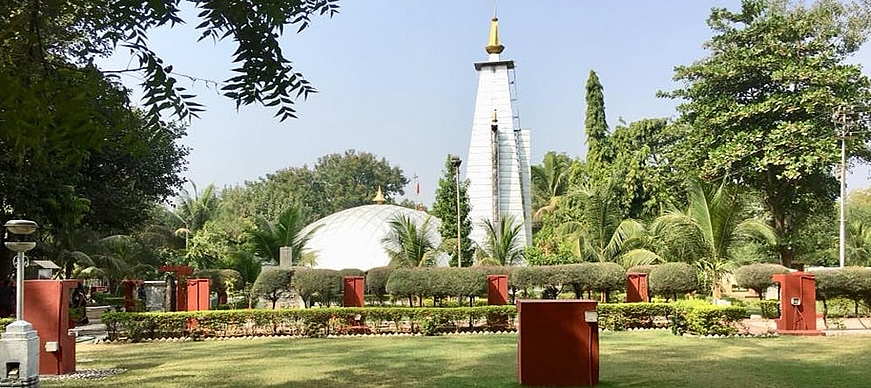
The Indian army does not usually have separate places of worship for different faiths, but this temple, built by the Electrical and Mechanical Engineering (
EME) Corps entirely out of aluminum sheets, worships
Dakshinamurthy, another name for Shiva. This uncommonly modern-looking temple is built with holy symbols from various religions. Located in Fatehgunj – within the premises of EME School – the EME temple is secular and represents several religions. Its geodesic structure is covered with aluminum. It was built by Indian Army personnel in 1966 and it is run by the army establishment. It is a favourite venue among locals and tourists. The temple was planned and constructed under the then commandant – Brig A.F. Eugene – of the EME School. The main deity of the temple is Lord Shiva and the temple is surrounded by small temples of small saints and gods, creating a similarity to the holy Amarnath temple that houses age-old deities from 7th to 12th century. It is a secular place which gives equal respect to all religions. The EME Temple is well regarded by archaeologists. It is a symbol of secularism and displays various features of several religions – Hinduism, Islam, Christianity, Buddhism, Jainism, Zoroastrianism. The idol of the main deity faces South, metaphorically representing Lord Dakshinamurthy imparting his teachings to the world. The temple is surrounded by statues of over a hundred deities, dating back to the 6th century, imitating the Amarnath Temple, one of the most sacred shrines of Lord Shiva.
Some archaeologists believe that this temple is unique regarding its design, concept and geodesic design. The unique aspect is how the temple supports secularism by incorporating holy symbols from every religion in its structure. The Kalash on the top symbolises Hinduism. The Dome signifies Islam. The Tower represents Christianity. The Golden-structure above the tower expresses Buddhism. The Entrance stands for Jainism. The Indian Army brings together a diverse set of people from all over the nation, each with their culture, traditions and religions. Since it would be difficult to accommodate all kinds of places of worship for the varied faiths that these people adhere to, it was thought to build a structure that integrates a relic from every dominant religion of India. It is a place where persons of any faith can come together under one roof. The EME Temple is a perfect illustration of the values that are the foundation of the Indian Army. On the outside of the structure are carvings of holy symbols from various religions. Each substructure of the building is representative of a different faith. The 'Kalash' on top of the dome symbolises Hinduism. The dome is found in the design of mosques, thus representing Islam The tower is symbolic of Christianity. The golden cap above the tower represents Buddhism. The main gateway of the temple suggests the Jain way.
The entire temple complex has a calm and relaxed atmosphere. The EME temple complex is full of greenery and it is very well maintained.
There is no entry fee to visit the EME Temple. You need to show a valid identity proof, preferably an Aadhar card, at the entrance gate. Photography is strictly prohibited inside the premises. Mobile phones and cameras are not allowed.